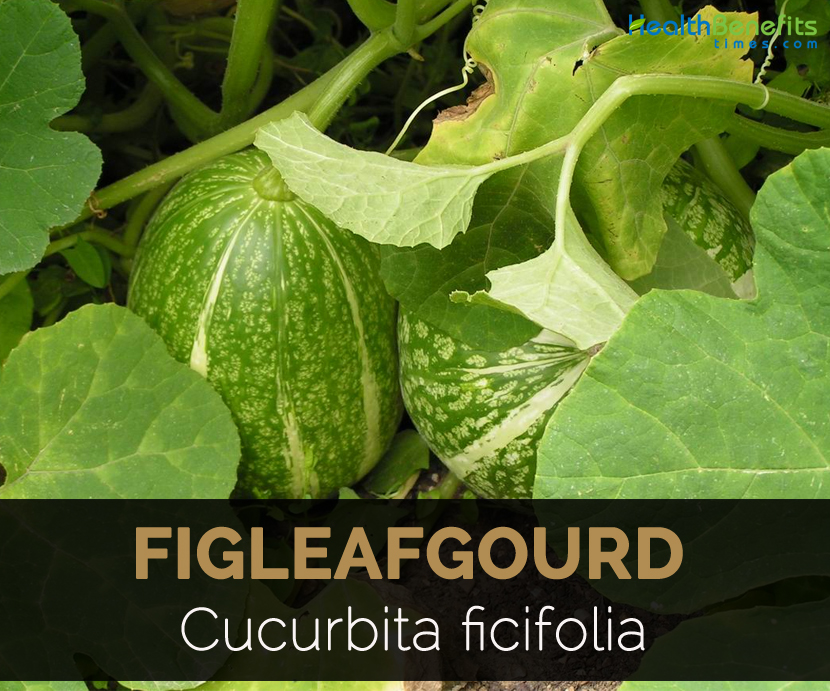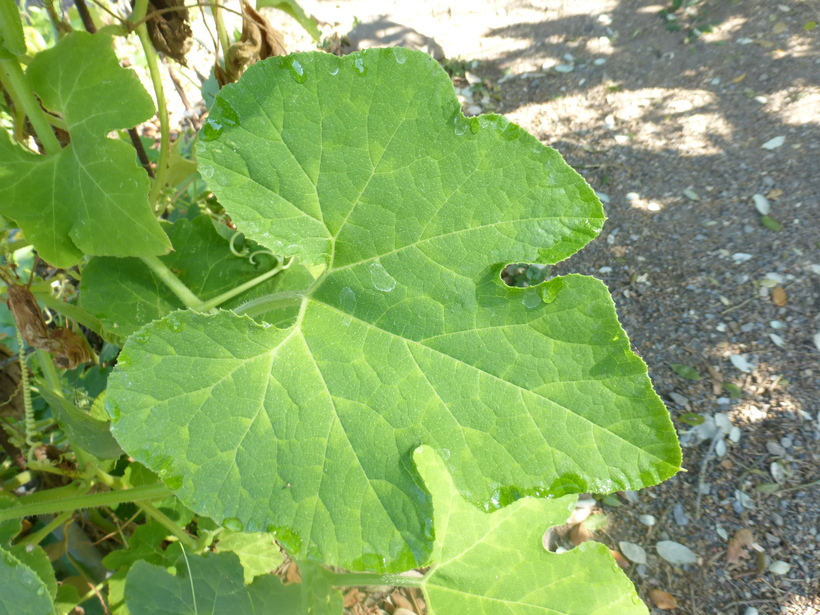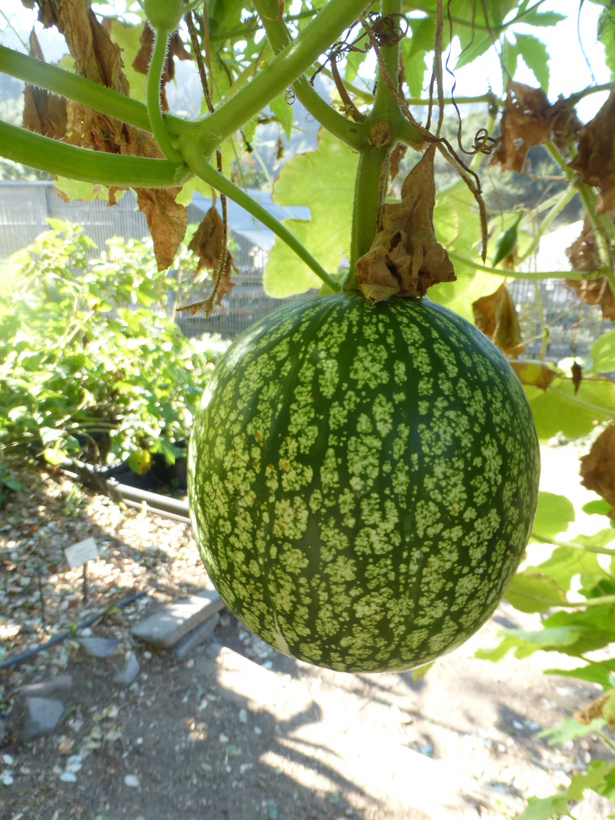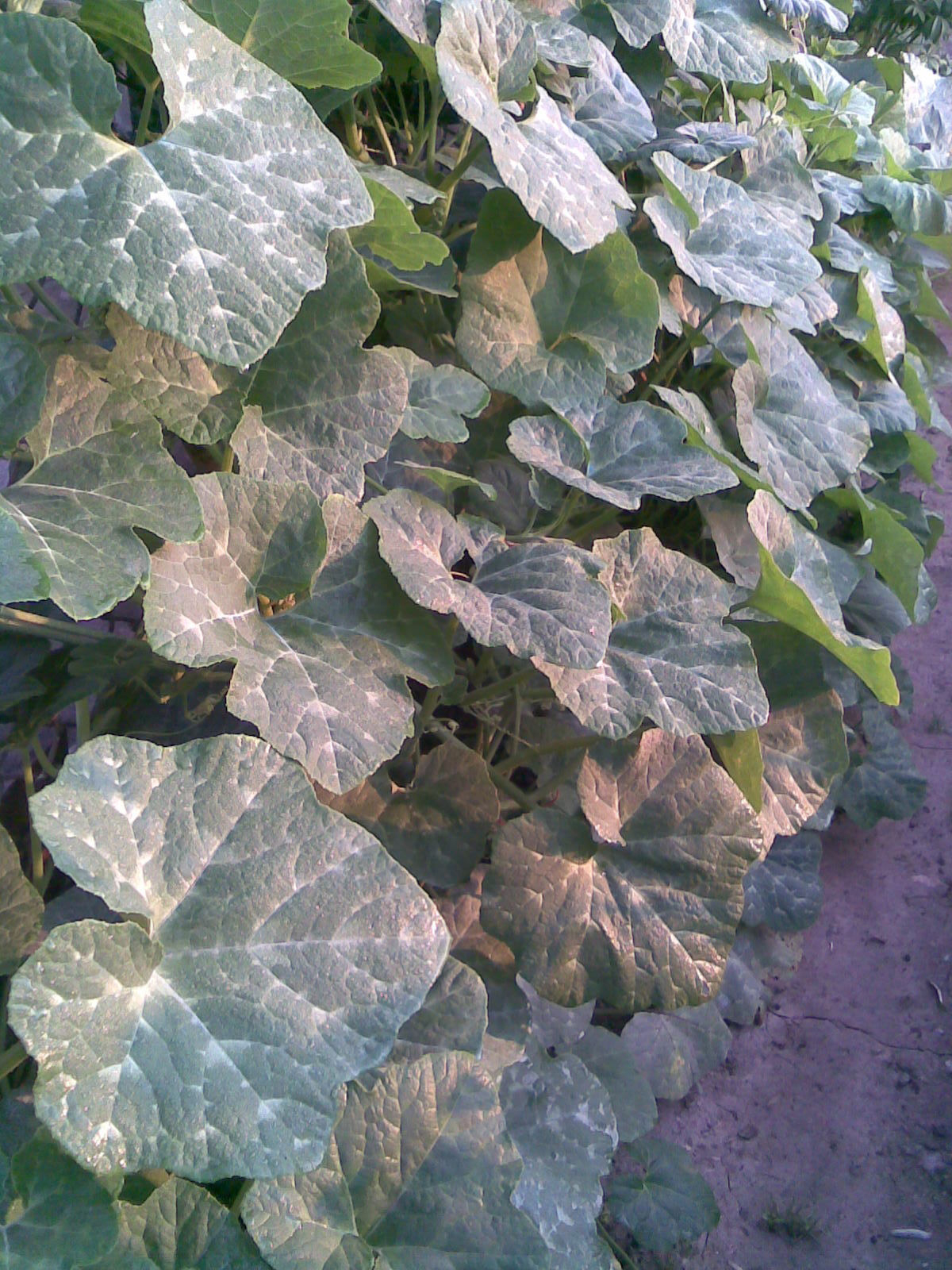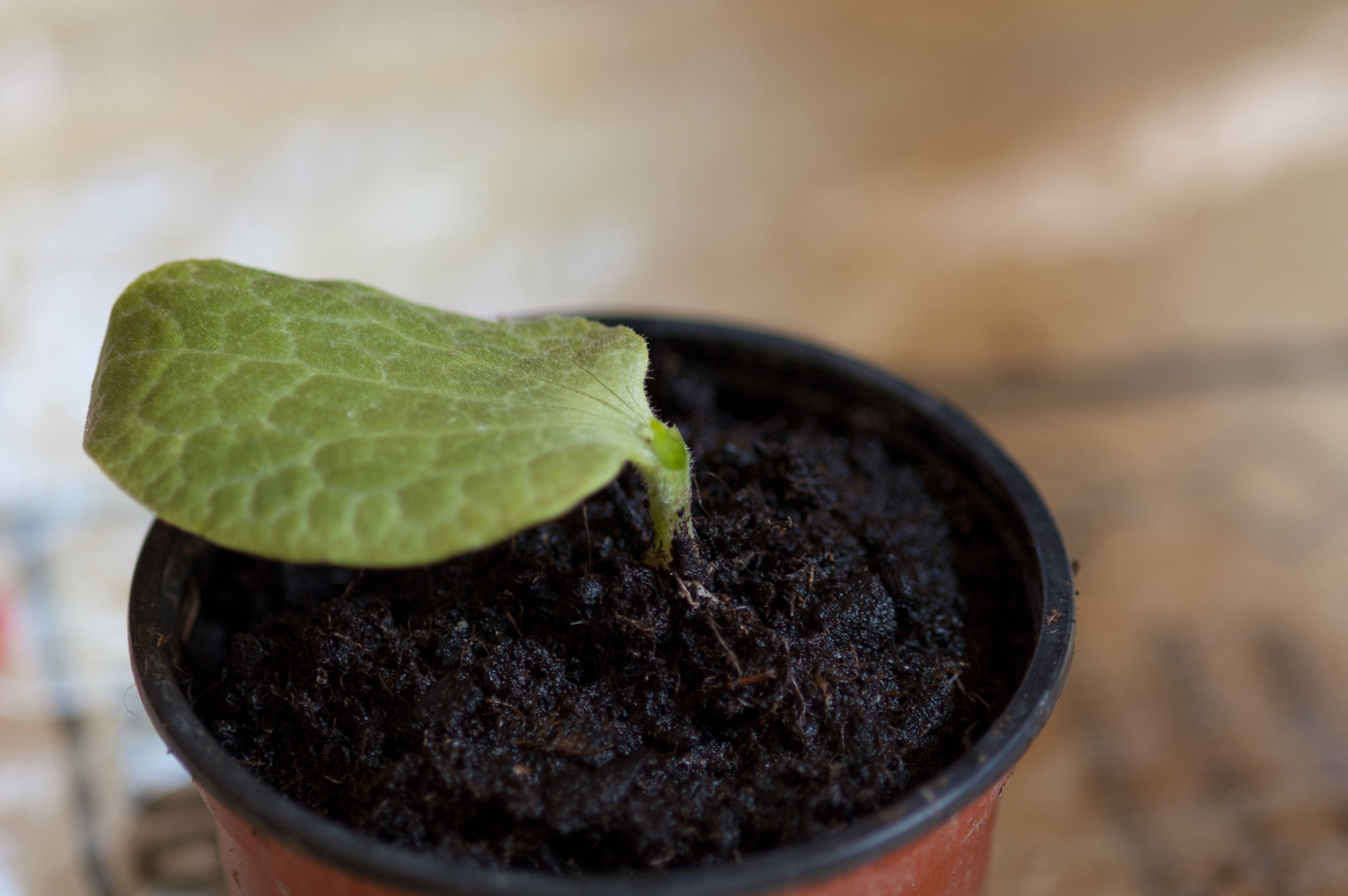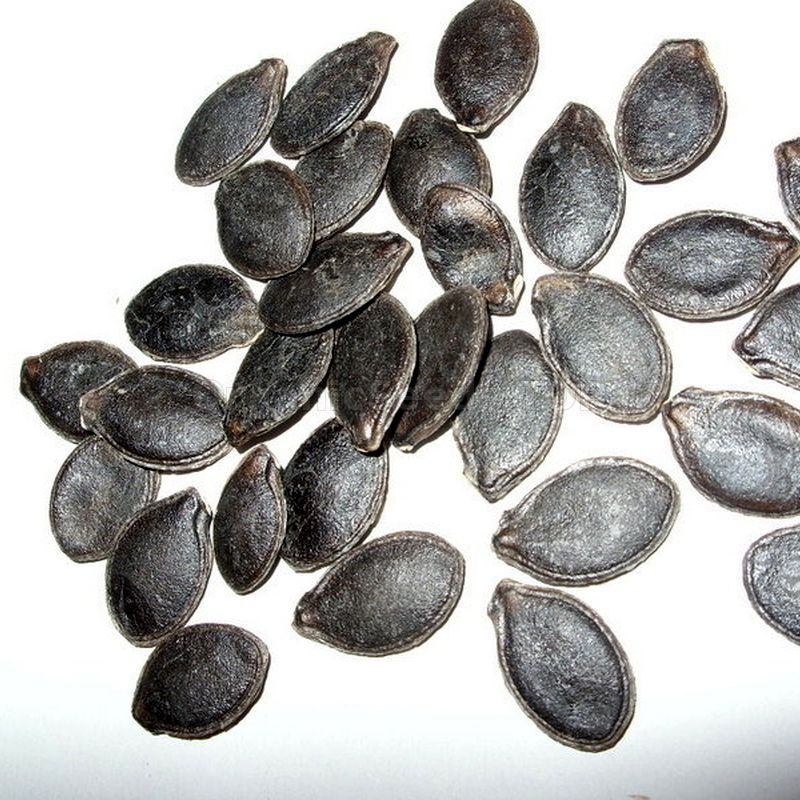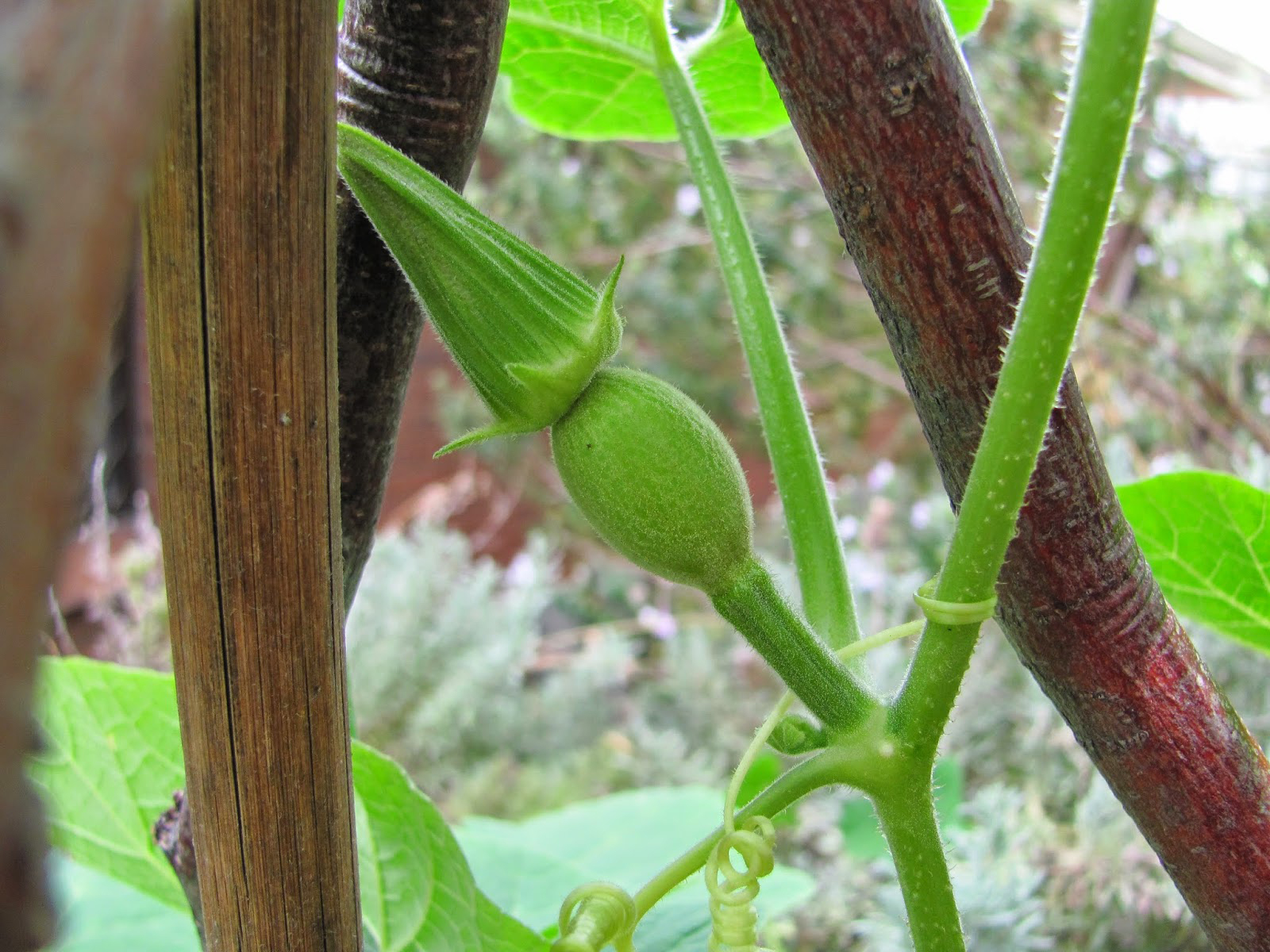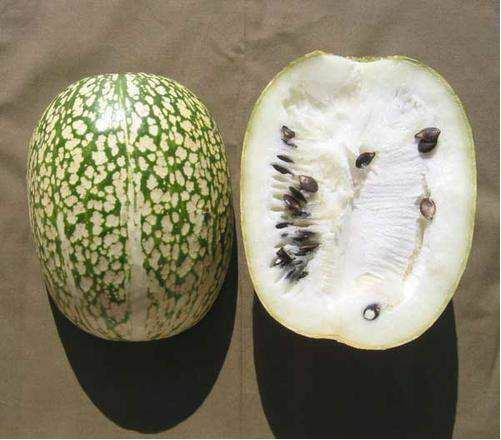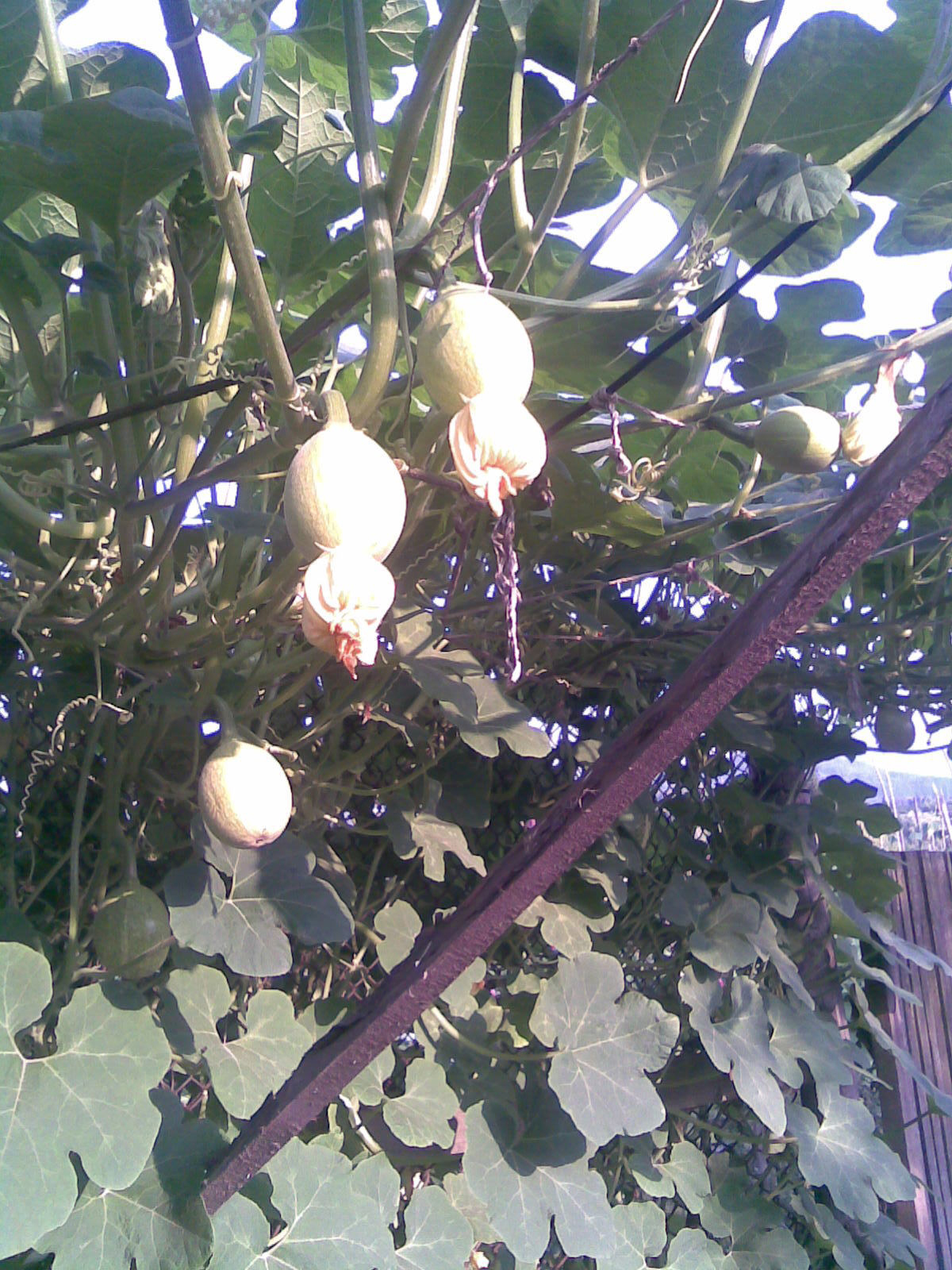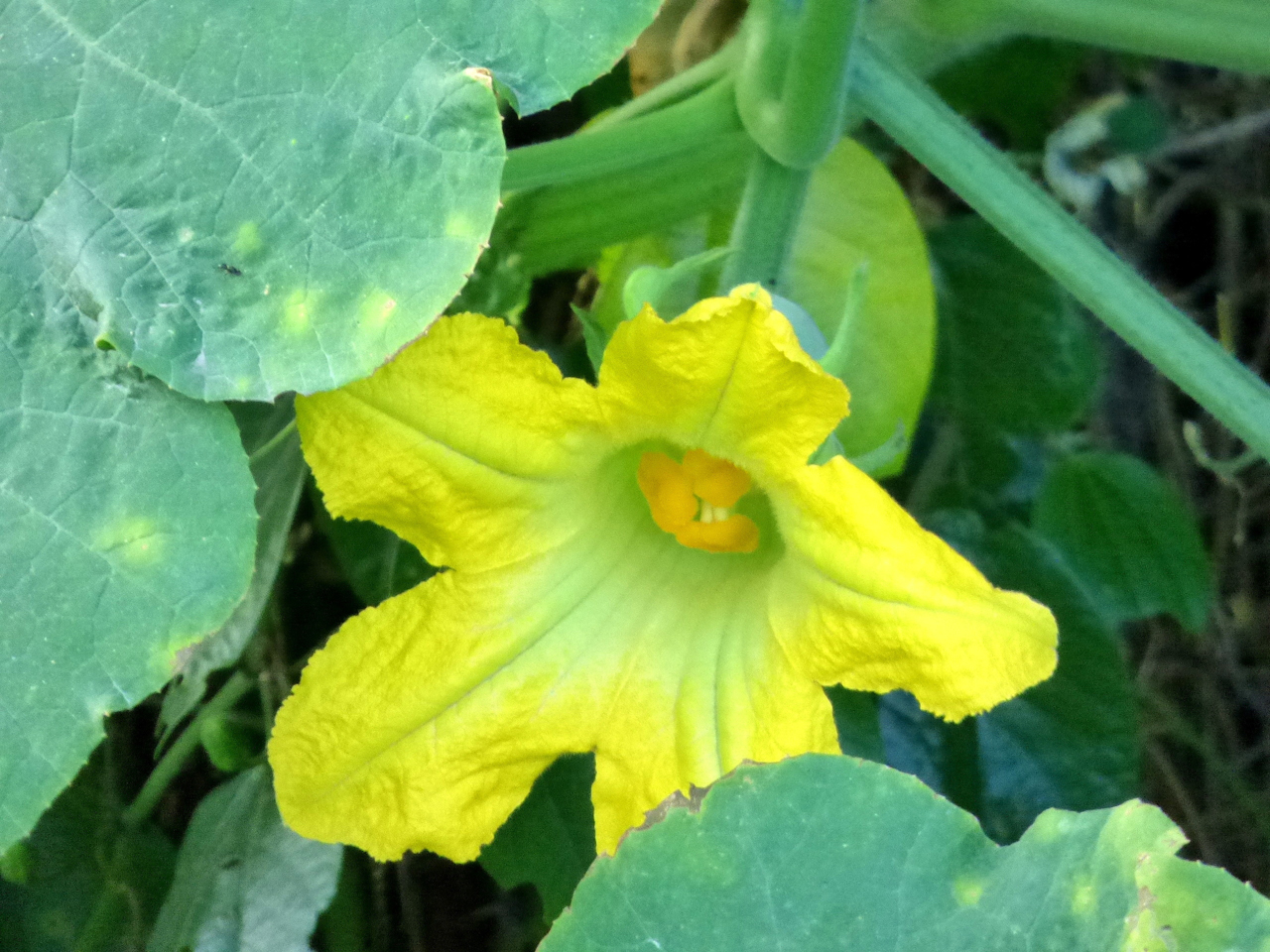| Figleaf Gourd Quick Facts | |
|---|---|
| Name: | Figleaf Gourd |
| Scientific Name: | Cucurbita ficifolia |
| Colors | White to green |
| Shapes | Globose to ovoid-elliptical, oblong, up to 35 across |
| Flesh colors | White |
| Taste | Sweet |
| Name | Figleaf Gourd |
|---|---|
| Scientific Name | Cucurbita ficifolia |
| Common/English Name | Angel’s Hair, Asian Pumpkin, Black-Seeded Gourd, Chilacayote, Chiverre, Fig-Leaf Gourd, Fig-Leaved Gourd, Malabar Gourd, Malabar Squash, Pie Melon, Shark Fin Melon, Siam Pumpkin, Thai Marrow, Thin Vermicelli Pumpkin, Black-seed squash, Cidra, Sidra |
| Name in Other Languages | Argentina: Cayote, Lacayote; Bolivia: Lacayote; Catalan: Cabell d’Àngel; Chile: Alcayota; Columbia: Vitoria; Costa Rica: Calabaza Cabellos De Angel, Chiverre, Chiberre, Chiverri; Czech: Tykev Fíkolistá; Danish: Figenbladgræskar; Eastonian: Viigilehine Kõrvits; Ecuador: Zambo; French: Courge À Confiture, Courge De Siam, Courge À Choucroute De Cheveux D’ange, Courge À Graines Noires, Melon De Malabar, Courge À Feuilles De Figuier, Potiron Cheveux D’ange; German: Feigenblattkürbis; Guatemala: Chilacoyotl (Nahuatl); Honduras: Calabaza Cabellos De Angel, Chiberre, Chiverri; Hungarian: Laskatök, Istengyalulta Tök, Téli Tök; Italian: Zucca Del Siam, Zucca Del Malabar; Japanese: Kurodane Kabocha; Kenya: Kahurura; Mexico: Chilacoyotl (Nahuatl), Chilacayote, Tzilacayote; Nahuatl: Chilacoyotl; Panama: Chilacayote; Peru: Lacayote; Polish: Dynia Figolistna; Portugal: Abóbora-Chila, Chila, Gila; Russian: Tykva Figolistnaja; Slovašcina: Figovolistna Buča, Smokvolistna Buča; Spanish: Alcayota, Calabaza De Cabello De Angel, Cabello De Angel, Cayote, Chilacayota, Cidra, Chilacayote, Sambo, Chiverre, Silacayote, Zapallo; Tanzania: Boga La Kimasai (Swahili) |
| Plant Growth Habit | Monoecious, short-lived, perennial climbing or trailing vine |
| Growing Climate | Cool |
| Flower | Yellow to pale orange, up to 7.5 cm across |
| Fruit shape & size | Globose to ovoid-elliptical, oblong, up to 35 across |
| Fruit weight | 11 to 13 pounds (5 to 6 kilograms) |
| Fruit color | White to green |
| Flesh color | White |
| Fruit rind | Smooth |
| Fruit Taste | Sweet |
| Seed | Ovate-elliptical, flattened, 15–25 × 7–12 mm, dark brown to black or creamy white |
Figleaf Gourd Benefits
- Controls level of sugar
Seeds are used to rejuvenate producing cells of pancreas. It helps to maintain the blood glucose level in the body. It has polysaccharide sugar which helps to restore pancreatic tissue. The pancreas circulation is improved.
- Diabetes prevention
It is capable of controlling sugar level in the blood and used to prevent diabetes.
- Liver health
Figleaf gourd helps to maintain liver health. It optimizes the metabolism of eliminating toxin from the body.
- Bone health
Fruits are rich in calcium which helps to maintain healthy bone. It provides necessity of minerals required for bone fracture. It helps to strengthen bones.
- Prevents bacteria
Fruits contain tannin, flavonoids and alkaloids which is used to eliminate bacteria from the body. It acts against pathogenic infection and provides effects as anti-microbial to various bacteria. It helps to prevent the disease and speeds cure during illness.
- Helpful for depression
It acts as antidepressant. It relieves nerve and provides calm feeling. It is a great treatment for people with insomnia symptoms. It optimizes the quality of sleep.
- Relieves fever
Figleaf gourd helps to provide relief from treatment and restores body temperature into normal temperature. It speeds up recovery from influenza.
- Treat Heatiness
Fruit helps to treat heatiness. It calms down heat inside stomach. It absorbs heat and provides coldness to the body. It helps to lower heatiness effect to the body.
- Weight Loss
Figleaf gourd seeds help to treat weight loss. It has low carbohydrates and high protein. It improves body metabolism to absorb vital nutrients and avoid from unnecessary weight gain. It prevents cardiovascular disease such as stroke and heart attack.
- Treat constipation
Fruits help to treat constipation with its laxative effect. It protects stomach wall so that the stomach won’t be able to produce much gas and acid. Thus, it eliminates constipation and maintains stomach health.
- Digestive health
Fruit has high content of dietary fiber. It improves digestive system. It promotes the metabolism of the body and assist fast digestion. Moreover, it acts as absorbing the crucial nutrients in the body. It optimizes the peristaltic movement and maintains intestinal health.
- Acts as antioxidant
Fruits are rich in isoflavones which acts as antioxidant. It provides the pleasant feeling to the body. It eliminates free radicals effect. Moreover, it maintains body and prevents the signs of early aging.
- Lower inflammation
Fruits are considered to be anti-inflammatory. It cures sore throat by lowering the sore inflammation and results to fasten cure. It provides relief from pain by controlling nerve to provide relaxation against illness.
- Boost Immunity
Fruit has high content of Vitamin C assisting in strengthening immunity system. It assist to prevent bacterial infection. It also maintains body health.
- Bronchitis treatment
Fruits have antibacterial and anti-inflammatory properties which are helpful in treating bronchitis. It relieves pain and maintains respiratory health.
Culinary uses
- Seeds, fruits, flowers, leaves and tender shoots are consumed.
- Immature fruits are cooked as vegetables or used in soups.
- In Asia, pulp strands are used to make soup especially shark fin soup.
- Flesh is impregnated with sugar to prepare candy confection.
- Mature fruits are fermented to make alcoholic beverage.
- In Spain, mature fruit is processed into jam.
- In Portugal, Spain and Hungary, sweet and mature fruits are used to make sweet dessert.
- Roasted seeds are consumed as snacks like peanuts or also consumed raw.
- Roasted and dehusked seeds are used as a garnish for meats and potatoes.
- In Chiapas, Mexico seeds are used with honey to make palanquetas, a dessert.
- Oil is extracted from seed.
- Young shoots, leaves and flowers are used as greens.
- Use the buds and male flowers in soups, stews and salads.
- In East Africa, leaves are consumed.
- In Tanzania and Kenya, leaves are mixed with pulses, maize, Irish potato and green bananas.
- In Mexico, flowers and shoots are cooked as vegetables.
- Mature fruits are boiled and consumed.
Culinary uses
- Fruits are used as juice.
- Boil the mature fruits and mix it in soup.
- Add the flowers in salad.
- Leaves are used to make herbal tea.
Traditional uses
- Ground the seeds with husk into flour and made into emulsion with water and taken as vermifuge.
- Use it as purgative to expel tapeworms and other parasites.
Storage
- Young leaves remain fresh for 2 days and immature fruits are stored for few weeks.
- Dry the seeds and store it for longer time period.
Side Effects
- It causes allergic reactions such as itchiness, rash and might cause asthma.
- Pregnant women should avoid it.
References:
https://www.itis.gov/servlet/SingleRpt/SingleRpt?search_topic=TSN&search_value=505907#null
https://en.wikipedia.org/wiki/Cucurbita_ficifolia
https://uses.plantnet-project.org/en/Cucurbita_ficifolia_(PROSEA)
http://www.naturalmedicinalherbs.net/herbs/c/cucurbita-ficifolia=malabar-gourd.php
https://www.nutritionvistas.com/fig-leaf-gourd-chilacayote/
https://drhealthbenefits.com/food-bevarages/fruits/health-benefits-of-figleaf-gourd


